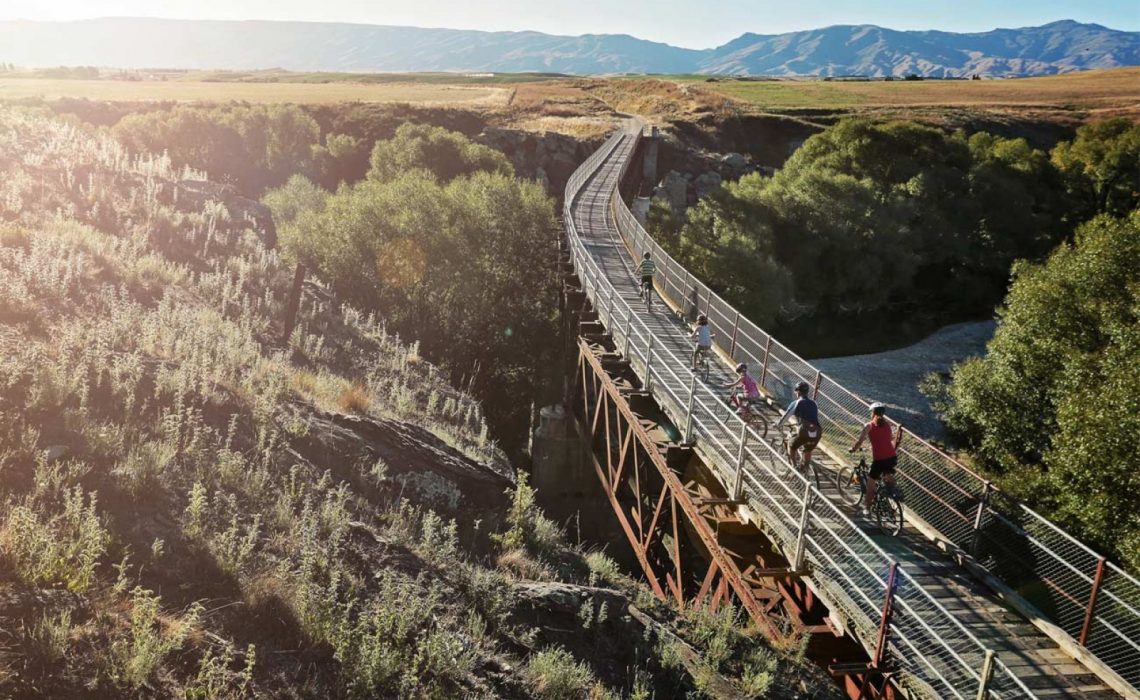
You might also like:
The cycle trails around Alexandra, some of the best in the country, are a joy at any time of year, writes Elisabeth Easther.
You’ll find few places on Earth that grow a sweeter apricot or cherry.
For some reason, Central Otago has more than its fair share of charming little towns; Alexandra is one of them. Not only can it boast of being one of the hottest towns in New Zealand, it also records some of the coldest temperatures in the land (an average of 148 frosts a year) and, what’s more, it’s the reigning champ when it comes to not having a lot of rain.
Which means, whatever you’re into weather-wise (unless it’s rain), Alexandra will surely tickle your fancy.
On the banks of the second-longest river in New Zealand, Alexandra is 33km from Cromwell and sits at the confluence of the Clutha River/Mata Au and the Manuherikia River.
Manuherikia was the town’s original name. Maori for “cry of a tied bird”, the name was changed in 1862 when Queen Victoria’s eldest boy, Albert, married a Danish Princess, Alexandra.
Once referred to as Alexandra South, for the sake of the post office, the south was dropped when Alexandra North changed its name to Pirongia — tuck that gem away for quiz night.
Like many Central Otago towns, Alexandra was built on gold but, rather than just fade away when the last miner decamped, it forged a new identity through horticulture, playing a vital role in the stonefruit industry.
The wider region is renowned for its produce and you’ll find few places on Earth that grow a sweeter apricot or cherry.
Picturing the people who came before us, the Ngai Tahu people and the subsequent early European settlers, you have to admire the undoubted grit it would’ve taken to survive here. Knowing how brutal the environment can be, it makes you wonder at the hardships people endured, while also feeling grateful for the creature comforts we take for granted in the 21st century. To learn more about that challenging past, spend a few hours at the Alexandra Museum and Art Gallery. Known collectively as Central Stories, this facility is full of relics and treasures with everything from fossils to mining exhibits, geological displays and a wealth of fascinating photographs. The art gallery also deserves a chunk of your time while the attached gift shop is a magnet for souvenir hunters.
Known as the business and political capital of Central Otago, Alexandra is also a town of events and celebrations. In spring, when the town’s trees perform a symphony played in petals, the blossoms warrant a festival. In the height of summer in February, the town gets fizzy with excitement as it celebrates craft beer, while in November it’s time for the Thyme Festival when the hills are a mass of light purple flowers and their wonderfully redolent aroma fills the air. Not to be ignored, in autumn the leaves cause the trees to blaze so fiercely, in certain lights you could be fooled into thinking they were on fire.
Featuring several social-media friendly landmarks, the Alexandra Mountain Clock trek is a pleasant short walk. Set off across the aptly named Shaky Bridge — the original incarnation of this suspension bridge was built in 1879, although the rock pillars are all that survive. After you’ve crossed, walk up a steep path to the clock, a popular installation since 1968, it’s illuminated at night to very pretty effect. The walk takes about an hour and is handy for getting your Alexandra bearings. If you’re visiting in winter, you’re bound to stop in at The Iceinline Sports Complex, a 30x60m ice rink where figure skating, curling and ice hockey are all on the menu.
In an incredibly picturesque location, this is the Southern Hemisphere’s largest outdoor ice rink.
But of all the attractions, it’s possibly the cycling that’s causing the biggest boost to the local economy and the trails around Alexandra are some of the best you’ll find in the country. And considering our Great Rides cover something like 2500km, that’s saying something. Starting in neighbouring Clyde, the Roxburgh Gorge Trail follows along the banks of the Clutha River, passing Alexandra as it goes, with this particular section an add-on known as The Millennium Track. A joy in any season, the colours are astonishing, the shades of the trees, the land and those distant Knobby Ranges all serve to contrast with the chalky blue waters of the Clutha. Arriving in Alexandra, most riders like to cross the Alexandra Bridge to refuel before heading on to Doctors Point where a jetboat ride can also be part of the adventure.
The popular Otago Central Rail Trail passes through Alexandra, notable for being the trail’s largest town. Alexandra is also popular with people who enjoy fishing, vineyard visits, four-wheel driving, riverboat cruising and gold panning, making it that rare thing, a town with something for everyone.
Source: nzherald.co.nz



